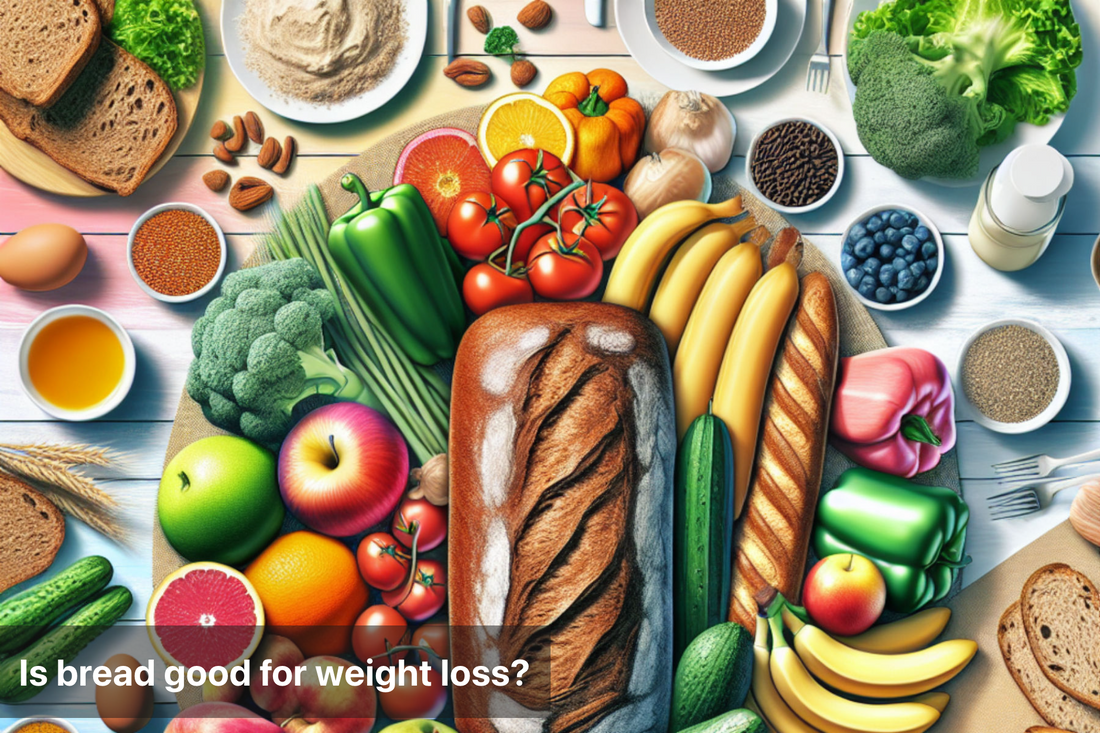
Is bread good for weight loss?
Share
When people think about weight loss, bread often gets a bad reputation. Many assume that cutting bread from their diets is a quick fix for shedding pounds. Over the years, bread has evolved, and numerous types now exist, each with its unique nutritional profile.
On one hand, some believe that all bread is detrimental to weight loss, while others argue that it can be a part of a balanced diet. The truth is more nuanced. Certain varieties, especially whole-grain options, can provide important nutrients and fiber, supporting digestion and satiety. This prompts another question: which bread is good for weight loss?
Portion control, choosing whole grains, and being mindful of overall dietary choices are crucial elements to consider. By approaching the topic with an open mind, we can explore how bread may fit into a weight loss strategy, moving past outdated perceptions and focusing on evidence-based insights.

The Nutritional Value of Bread
Bread comes in many varieties, and its nutritional content depends on the type and ingredients. Here’s a comparison of common bread types:
|
Type of Bread |
Calories (per slice) |
Carbs (g) |
Protein (g) |
Fiber (g) |
Fat (g) |
|---|---|---|---|---|---|
|
White Bread |
70-80 |
13-15 |
2-3 |
0.5-1 |
0.5-1 |
|
Whole Wheat Bread |
90-100 |
12-14 |
3-4 |
2-3 |
1-2 |
|
Multigrain Bread |
90-110 |
13-15 |
3-4 |
2.5-3.5 |
1-2 |
|
Sourdough Bread |
80-90 |
12-14 |
3-4 |
1-2 |
0.5-1 |
|
Rye Bread |
80-90 |
12-14 |
2-3 |
2-3 |
0.5-1 |
Is Bread Good for Weight Loss?
The answer depends on the type of bread, portion sizes, and overall diet. Here are some factors to consider:
1. High Fiber Content:
Whole wheat, multigrain, and rye bread are rich in fiber, which promotes satiety and aids digestion. Fiber helps you stay full longer, reducing overall calorie intake.
2. Refined vs. Whole Grains:
-
White bread is made from refined grains, which lack essential nutrients and fiber. It can cause spikes in blood sugar levels, leading to increased hunger.
-
Whole grain bread, on the other hand, provides sustained energy and better nutrient absorption.
3. Calorie Control:
Bread can fit into a weight-loss diet if consumed in moderation. Opt for one or two slices per meal and balance it with proteins and vegetables.
4. Quality of Ingredients:
Choose bread with minimal additives and preservatives. Look for labels indicating 100% whole grains or sprouted grains.
“Healthy eating is a way of life, so it’s important to establish habits that are simple, realistic, and sustainable.”adds Health Coach Madhavi Mahajan (PG in Sports Science, Fitness & Nutrition)
Tips for Including Bread in a Weight-Loss Diet
|
Tip |
Description |
|---|---|
|
Choose Whole Grains |
Opt for whole wheat, multigrain, or rye bread for better nutrition. |
|
Control Portion Sizes |
Limit to 1-2 slices per meal to avoid excess calorie consumption. |
|
Pair with Protein and Veggies |
Combine bread with eggs, lean meats, or avocado to create a balanced meal. |
|
Avoid Sugary Spreads |
Use healthy spreads like hummus or nut butter instead of sugary jams. |

Pros and Cons of Eating Bread for Weight Loss
Pros:
-
Convenient and Versatile: Easy to prepare and pairs well with various foods.
-
Provides Energy: Rich in carbohydrates for sustained energy.
-
Nutrient-Dense Options: Whole grain and multigrain breads offer fiber, vitamins, and minerals.
Cons:
-
Calorie Dense: Can add up quickly if consumed in large quantities.
-
Low-Quality Options: Many store-bought breads contain added sugars and preservatives.
-
Potential for Overeating: Bread is easy to overconsume, especially in processed forms.
Summary
In summary, the relationship between bread and weight loss is more nuanced than it may seem at first glance. Throughout this blog, we explored various aspects of bread consumption, from its nutritional profiles to its potential role in a balanced diet. The question "is bread good for weight loss?" can be answered with a qualified yes. When consumed mindfully, bread can certainly be part of a weight loss strategy.
Prioritizing whole grain options, which are higher in fiber and essential nutrients, can be beneficial. These varieties not only keep you feeling fuller for longer but also provide energy crucial for daily activities. It’s essential to practice portion control and pay attention to how bread fits into your overall caloric intake.
Moreover, we dispelled several myths regarding carbohydrates—specifically, the unfair stigma attached to bread. By replacing misconceptions with facts, we empower ourselves to make informed dietary choices. In essence, there’s no need to eliminate bread entirely from your meals; rather, focus on selecting the right types and consuming them in moderation. Remember, it’s about balance and understanding how different foods contribute to your health goals.
FAQs
-
Can I eat bread every day and still lose weight?
Yes, you can eat bread daily as long as it fits within your calorie and nutritional goals. Choose whole grain options and control portions.
-
Which type of bread is best for weight loss?
Whole wheat, multigrain, and rye bread are excellent choices due to their high fiber content and lower glycemic index.
-
Is gluten-free bread better for weight loss?
Gluten-free bread isn’t inherently lower in calories. It’s suitable for people with gluten intolerance but may lack fiber and nutrients.
-
How much bread can I eat in a day?
Limit bread to 2-4 slices per day, depending on your calorie needs and activity level.
-
What should I avoid pairing with bread?
Avoid pairing bread with high-calorie spreads like butter, sugary jams, or processed meats.
